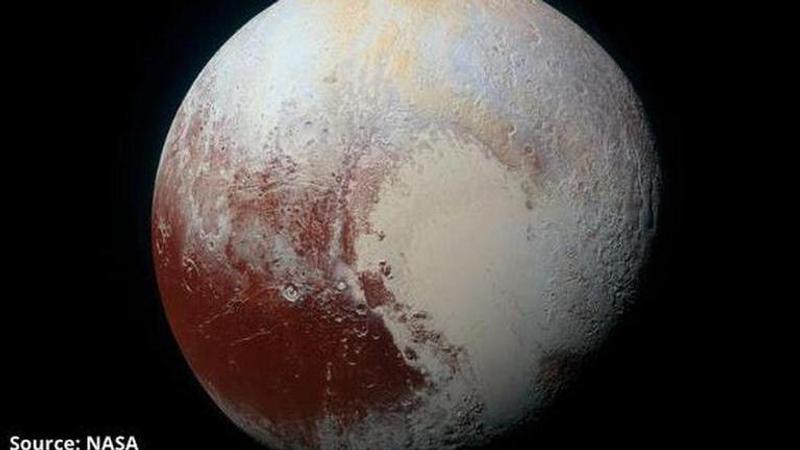Published 16:08 IST, August 7th 2020
Pluto's glaciers may be growing due to change in the dwarf planet's seasons: study
When NASA's New Horizon probe flew by Pluto five years ago it was discovered that it has glaciers made of solid methane. Find out if these glaciers are growing.

NASA's revolutionary New Horizons probe flew by Pluto in 2015. It photographed glaciers made of solid methane and nitrogen which were present on the surface of the icy dwarf planet. According to the reports of space.com, the stunning images captured by NASA’s interplanetary space probe prompted many scientists to conduct new studies. The New Horizons spacecraft snapped pictures of Pluto’s breathtaking icy mountain peaks. In the research that followed, scientists provided evidence that the grains of methane and nitrogen in the dwarf planet's glaciers were actually moving, expanding, and growing.
Source: NASA
Glaciers on Pluto contains grains of methane, and they are moving
The report further stated that the grains of methane move as temperatures rise. This indicates that the glaciers might expand and grow as things warm up. And it’s not just Pluto’s methane particles that have intrigued the scientific community on Earth. Both methane and nitrogen grains are showing similar behaviour, with respect to change in temperature.
Source: NASA
NASA reports claim that Pluto has a temperature of minus 418 to minus 364 degrees Fahrenheit, which is minus 250 to minus 220 Celsius. Even in its warmer seasons, Pluto is still about -220° C. The space.com report suggests that at this temperature both the methane and nitrogen molecules are freely rotating in the solids.
These molecules are not bound together very well. The reports further reveal, that considering the fact, that methane and nitrogen molecules can flow at such extremely low temperatures is somewhere related to the crystal structures of these molecules. According to the Space.com report, Planetary Scientist Maynard-Casely who is the head of this research has stated that nitrogen will actually have two crystal structures given the range of temperatures seen on Pluto. She further revealed that nitrogen’s story is really interesting, given that the molecules have the ability to cool into an ordered structure. If the temperatures are slightly higher, around 44 Kelvin, which is minus 380.47° Fahrenheit, or minus 229.15° Celsius, the nitrogen molecules can move freely rotating in a plastic state.
Source: NASA
More about Pluto
Pluto lies billions of miles from Earth and floats in the far icy reaches of the solar system known as the Kuiper Belt. According to NASA, Pluto takes a whopping 248 Earth years to complete each orbit around the sun. Hence, demoting it from planet status, as according to the International Astronomical Union, every planet must have completed at least one revolution around the Sun to be considered a planet. Moreover what lends Pluto its dwarf planet status is its incredibly small size. NASA’s New Horizon spacecraft revealed that Pluto is only 1,473 miles or 2,370 kilometres in diameter. NASA further states, that with a radius of 715 miles or 1,151 kilometres, Pluto is about 1/6 the width of Earth.
Updated 16:08 IST, August 7th 2020






